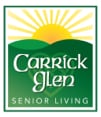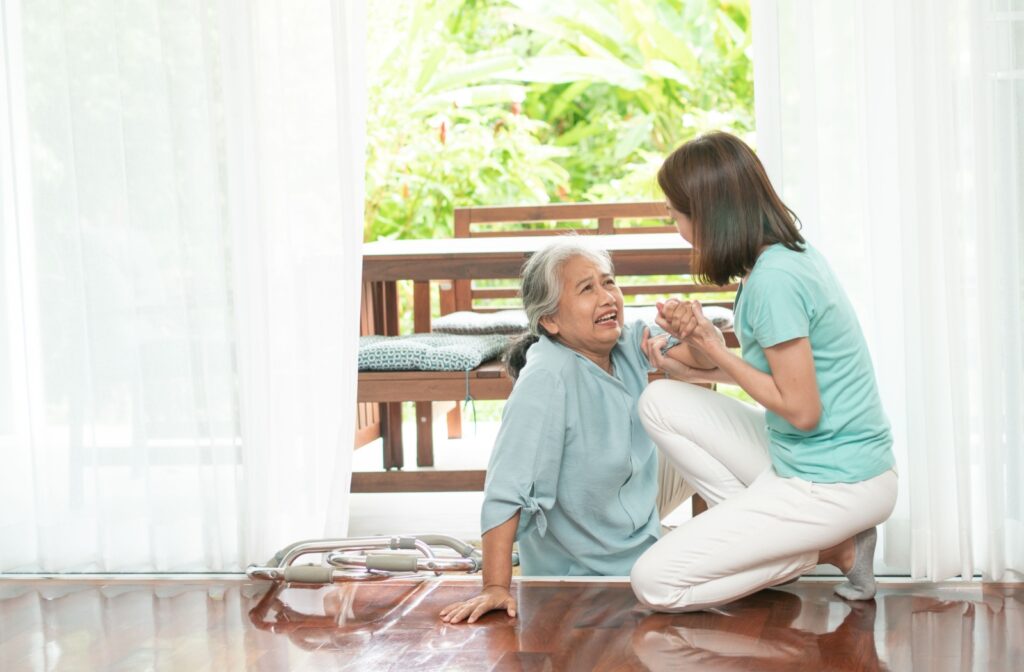Unfortunately, one of the most common concerns for seniors, their families, and caretakers is the risk of falls. A sudden fall can not only cause physical harm but also be emotionally distressing for both the senior and their caretaker.
When a senior falls at home, the immediate concern is checking for injuries, helping them get up (if possible), and seeking medical attention to help prevent complications. Then, it’s time to assess why the fall happened and how you can prevent it from happening again.
You may also consider changing your loved one’s living environment to prevent future falls. Respite care can give your loved one support while they heal from injuries sustained or while you make changes to improve their living space.
Understanding Seniors & Fall Risks
Falls are the leading cause of injury among older adults, and about one in four Americans aged 65+ falls each year. Why are seniors at such high risk?
The most common reasons older adults have an increased risk of falls include age-related changes, environmental hazards, and cognitive decline.
Aging-Related Changes
Seniors can experience natural, age-related changes that can increase the risk of falls, including:
- Vision decline, such as reduced depth perception, diminished peripheral vision, & conditions like cataracts, can make navigation difficult
- Mobility issues with conditions like arthritis & muscle weakness, reducing balance & movement stability
- Chronic illnesses, such as Parkinson’s, diabetes, or heart disease, can affect coordination & strength
- Certain medications may cause dizziness or drowsiness, increasing the likelihood of a fall
Environmental Hazards
A safe environment is crucial to promoting safety, so look for hazards like:
- Slippery floors or loose rugs
- Poor lighting or obstructions to visibility
- Uneven sidewalks or poorly maintained walkways
- Overcrowded spaces or narrow spaces
Cognitive Decline
Memory-related conditions such as Alzheimer’s may lead to disorientation and unsafe decisions, inadvertently triggering a fall.
How You Can Help Your Loved One Stay Safe
Preventing falls begins with proactive steps. By making their living environment safer and promoting physical health, you can drastically reduce the chance of a fall.
Create a Safe Environment
You can help create a safe environment for your loved one by:
- Installing grab bars in bathrooms, non-slip mats, & handrails near stairways
- Updating lighting so hallways & rooms are well-lit, reducing risks from poor visibility
- Keeping clutter off the floor & secure rugs with anti-slip pads
Promote Physical Health
Improving physical health can help reduce the risk of falls. You can help older adults support their physical health by:
- Encouraging light exercises, such as yoga, Tai Chi, or walking, to improve balance & agility
- Scheduling regular eye exams, hearing checkups, & general health checkups
- Reviewing medications with a healthcare provider to identify side effects like dizziness
Use Assistive Devices
When needed, mobility aids like walking sticks, canes, or walkers can offer extra support.
What to Do After a Senior Falls at Home
Even with precautions, falls can still occur. Knowing what to do can protect your loved one’s health and well-being when this happens.
Immediate Assessment
Check for injuries:
- Look for visible signs of injury, such as swelling, bruises, or cuts
- Ask if they feel pain or discomfort, particularly in their legs, hips, or back
- Observe if they are disoriented, drowsy, or appear unusually quiet
Stay calm and supportive:
- Gently reassure them, as rushing or panicking could increase stress
- Avoid moving them if you suspect any head, neck, or spinal injuries
- When you suspect injuries, call 911 or emergency services
Monitor vital signs:
- Check their pulse & breathing if they’ve hit their head or seem faint
- Any signs of shallow or irregular breathing warrant immediate medical attention
Helping Them Get Up
If no serious injuries are evident and they can move:
- Position a sturdy chair nearby
- Ask them to roll onto their side
- Ask them to place their hands & knees on the floor
- Assist them in placing their hands on the chair seat
- Support their body as they rise into a seated position
- Allow them to sit & rest in the chair before attempting to get up
Seeking Medical Attention
Even if injuries seem minor, it’s crucial to follow up with a healthcare professional to detect potential underlying issues and get support:
- Schedule a visit with their primary doctor for a complete evaluation
- Discuss any changes in their mobility or likelihood of future falls
- Consider fall-prevention strategies (physical therapy, balance training)
After the Fall: Respite Care to Provide Relief

Caring for a senior loved one after a fall can feel overwhelming, especially for adult children juggling work, family, and other responsibilities.
Respite care can provide essential support for your loved one during recovery. You can also use the time to make changes to create a safer environment.
What Is Respite Care?
Respite care offers temporary, professional assistance to seniors recovering from injury while alleviating the demands on family caregivers.
Seniors can benefit from a stay in respite care for a few hours, several days, or weeks. The care focuses on creating a safe, nurturing environment for seniors.
Benefits of Respite Care After a Fall
Respite care can offer multiple benefits for seniors and their loved ones, including:
- Professional recovery support
- Skilled caregivers help seniors adhere to their recovery plans, helping prevent complications
- Staff provide essential services like meal preparation, mobility support, & medication management
- Physical & emotional healing
- Time spent in respite care encourages seniors to regain confidence in mobility under professional supervision
- Social interactions with caregivers & other residents provide emotional upliftment
- Reduced stress for caregivers
- Adult children, who often juggle full-time work with caregiving, can take a much-needed break knowing their parent is in trusted hands
Respite Care as a Trial Run for Senior Living
If you’ve been considering long-term senior living options for your loved one, respite care can serve as an ideal trial period:
- It allows your parent to familiarize themselves with a professional living environment
- Your family can assess the quality of care & community before making a final decision
Your Path to Peace of Mind
Falls are challenging, but they don’t have to define the lives of seniors or their caregivers. With thoughtful fall prevention efforts, a proper response plan, and compassionate respite care, recovery can be smoother and stress-free.
At Carrick Glen Senior Living, our compassionate team is genuinely committed to loving our permanent and temporary residents. Contact us today to learn how our respite care services can support your loved one’s recovery and your family’s well-being.



